Group B. Serena, Miranda & Akilah
Jambo! Today we had a day filled with birds, snakes & special guests!!
As the sun finally rose at 7 am, most of the camp was up and ready to start the day. Job Ilondanga, our local Kakamega rainforest expert (more on him later) ,invited us to go bird-watching around some of the trails in the forest. Amongst some of the most beautiful and iconic species we saw were the brilliantly coloured double-toothed-barbet, pin-tailed Whydah and the endemic dusky crested flycatcher (on a nest).
After a delicious and energizing breakfast, Job gave us a phenomenal talk. He explained to us his background and how he came to work in Kakamega after being born and raised here. He also told us about the role he’s played in conservation of species in the area, especially for butterflies. As a matter of fact, he’s even cited in our butterfly guide book!! Job also addressed the various aspects of the forest and the factors that affect it. These included the community, human-wildlife conflict & different conservation programs he’s led. The most remarkable and inspiring one was his community based and led corridor restoration where 50% of a previously degraded corridor has been restored thanks to sapling planting. The hope is that eventually the water will fully return and allow the community to benefit from it, as well as help flying squirrels return to Kakamega.
Next, seeing as the sky was bright and sunny, we took part in an exhilarating herping (relating to reptiles) activity. We got to observe and attempt to catch tropical house geckos and variable skinks… though unsuccessfully. However, Lacey was skilled enough to catch a common house lizard who decided to get payback by giving her its worst bite (very cute considering she felt nothing and it gave its all). Following suit, Dr. Steve later on would catch a Jackson’s forest lizard, who would also try and show him who’s the boss with a bite.
The final presentations took place and addressed solutions to modern ecological issues in East Africa. Jana started us off by explaining the importance of Indigenous peoples in conservation and the disproportionate impact they have, in that they are just 5% of global population but protect 28% of global terrestrial area! Up next, Alikah talked about native birds preferring invasive plant species over the local ones in riparian habitats along the banks of rivers. We even learnt about birds wearing little cute backpacks for tracking purposes. Suzy then discussed how conservation needs can intersect with local community needs. Conservation decisions must be made in a way where the community is involved and properly benefiting. Last but not least, Yiling finished us off with her presentation on prescribed burns and their effect on rodent species richness. in Africa As it turns out, fire is a key part of some ecosystems. Great job everyone!!
After lunch, we were extremely fortunate to see a cutie pookie venomous snake (although Shamini disagreed). The green bush viper juvenile was just vibing by the logs behind the kitchen building. All who wanted could get pretty close and snap some amazing pictures. We are only the second ever field course group to see this species!! The day continued to give the snake enthusiasts a treat by delivering a Gaboon viper and a rhinoceros horned viper, two extremely elusive species we did not expect to see (although Miranda had been manifesting seeing one since Nairobi. Thanks Miranda). The snakes were collected by the Kenyan Wildlife Service after being spotted at a sugar cane plantation. They are being kept for a short period of time for educational purposes after which they will be released back into the wild.
One student, Serena, received quite a shock when she went to view the Gaboon Viper in it’s little enclosure. The cage was held shut by a cut up earphones cord tying the glass front to the top. When Serena looked, the snake, fast as lightning, suddenly struck. Serena screamed and fell over, but luckily, and as anticipated, the snake was stopped by the glass. Saved by a cut-up earphones cord!
We then headed back to camp and participated in the drawing exercise where we picked a non-living interesting object to draw. For the exercise, we would first draw the outline, then the second drawing would included shading and texture, and the third would be drawn in colour. The goal was to practice & enhance our art of observation and gain an appreciation for illustrated eco-journals and field guides in contrast to pictures. “We are all imperfect manifestations of an ideal perfect, universal form,” Professor Steve said. “Paintings and drawings are attempts to manifest the perfect form.” We also realized art may not be our strong suit after seeing Dan Derbyshire’s drawing of a water thrush… it put our art pieces to shame.
While the previous activity was taking place, we were lucky enough to see a fourth snake, a forest cobra hatchling Job found! We also learnt the importance of letting Dr. Steve know about found snakes so that he can get his mighty hook and catch it for us.
After a brief break, we started the canopy cover activity where we learned how to use a densiometer to estimate tree canopy cover. Very simply put, just count the squares, multiply and subtract from 100 to get a percentage.
Then, after dinner, we were honored to receive a second guest lecture from Karen Ndiema, the Camp Warden at Kakamega Forest National Reserve. Karen told us all about the conservation efforts at Kakamega Forest, the different governing bodies, and the local communities that use and rely on the forest. We learned that one side of the forest is managed by the Kenya Wildlife Service and left pristine, while the other is under the jurisdiction of the Kenya Forest Service and allows use of the land for activities such as agriculture, grazing and collection of firewood and medicinal herbs. Through this dual management strategy the forest can be an ecological biodiversity reserve while also providing for the local communities.
Finally after a long and very eventful day, we were free to rest, relax and sleep and prepare for another exciting day tomorrow. Now that we are more than halfway through this field course, everyone is extra friendly and our days are filled with giggles, laughs, inside jokes, and fond memories. It poured for two hours. It is a rain forest after all.
Tune back in to tomorrow blog to hear more about our adventures in Biodiversity and Conservation in East Africa with Queens University in Kenya.
Lala salama :))
- Job with the butterfly guide
- Butterfly guide ankcnowledgements
- Birdwatching
- Lacey getting bitten
- Lizard wrath
- green bush viper juvenile
- Gaboon viper
- forest cobra. Miranda
- Miranda’s drawings done in our art session
- Karen, Chief of Kakamega, giving us a post-dinner talk
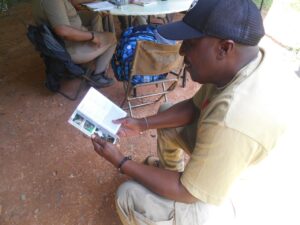
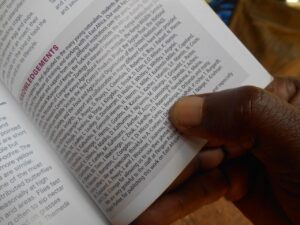
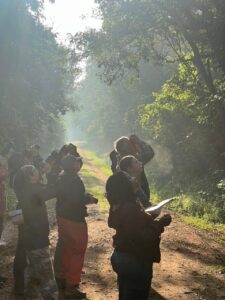
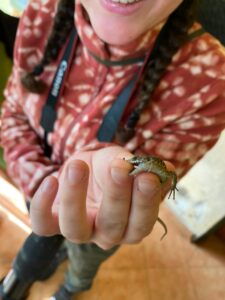
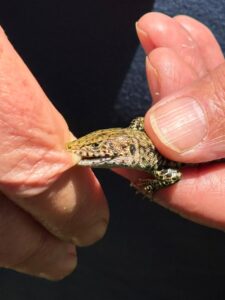
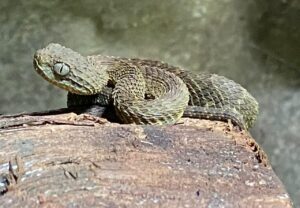
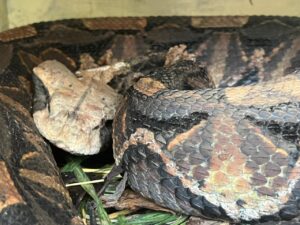
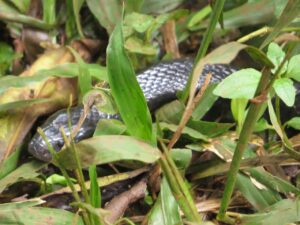
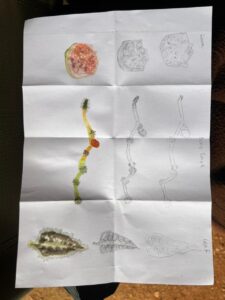
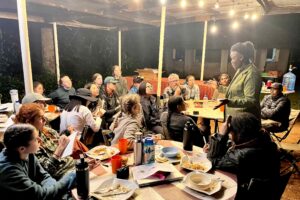
Thank you for sharing your journey with us. There are many members of the Whiting family eager to read each post. The incredible amount of detail shared in your daily experiences and photography is very inspiring. Thank you for the tremendous effort and care that has been made to provide a truly special experience to the students and inspire them in their journey. I hope everyone feels better soon to fully enjoy the remain days in the Maasai Mara. 😀
What an amazing experience Yasaman! Your Grandfather shared the link with me and I was intrigued to see the depth of understanding that the course instills to add to your life experiences that shape your perspectives for your place in the World. What you have seen and learned there will stand you well in understanding biodiversity and the complexities that humanity and the environment face.
As I read each day’s report it brought back memories from my visit to that part of the World while I participated for Canada in the negotiations of the Biodiversity Convention. I wish all the participants in the course the courage to face the challenges ahead.